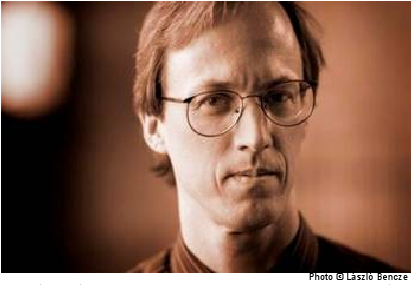Intelligent Design
The phrase "intelligent design" is heard a great deal lately in the media, usually in the context of secondary school science education.

William Dembski
The phrase "intelligent design" is heard a great deal lately in the media, usually in the context of secondary school science education.

William Dembski
Dr. Dan Reynolds attended the recent Creation Superconference held in Myrtle Beach, South Carolina July 13-17. Dr. Reynolds has provided us a summary of each of the sessions at the conference.
The TASC newsletter article Fossils examined the fossil record as evidence in support of the theory of evolution. 1 The conclusion of that article, as well as of several evolutionists themselves, was that the fossil record did not provide evidence to support the theory of evolution. We might think, "Well, that doesn't matter, since evolution is so strongly supported by the genetic evidence." However, is it really? Let's look and see. We will look primarily at the genetic evidence.
The idea of life arising from non-life is known as abiogenesis. It might be argued that abiogenesis is not evolution and thus is irrelevant in a discussion of evolution. The line of reasoning is that evolution deals with how life evolves from pre-existing life via natural selection, or how more complex life arises from simpler life, which does not involve the origin of life. This is still life giving rise to more complex life, not life arising from non-life. Therefore, the argument goes, the question of how life arose from non-life is not part of evolution, and is therefore excluded from any discussion of evolution as not being relevant.
I was recently invited to give a talk on intelligent design to a college philosophy class on Darwin, Marx, and Freud. I have known the professor for a number of years and had presented to his classes before. He usually has had me come in and present the case for intelligent design (ID) at the start of the section on Darwinism. The professor is an atheist but interested in discussing various views. I can only imagine what he has to say about my presentations afterwards; no doubt he tries to counter my arguments. Since I only had one chance to speak to these students, I wanted to present them with what I considered to be the best evidences for theism. This article is based on that talk. The discussion here will be brief and in everyday language.
This month I report on various science news stories and articles from the secular and creationist literature from over the past few years. The topics will include origin of life research, the discovery of nearby earth-sized planets, the discovery of gravity waves, the competition between dark matter and Modified Newtonian Dynamics (MOND) for explaining astronomical observations, new evidence for a galactocentric universe, the use of DNA for computer memory, a conference on the historicity of Adam, and an upcoming total solar eclipse which will soon be visible near you.
Dr. Nathaniel Jeanson's new book Replacing Darwin: the New Origin of Species 1 was released in October of 2017. Jeanson holds a doctorate in cell and developmental biology from Harvard (2009). He joined the staff at the Institute for Creation Research (ICR) in 2009 but has since moved to Answers in Genesis (AIG) where he is a research biologist, author, and speaker. Jeanson has written numerous lay articles, book chapters, and technical papers in secular and creationist journals. 2 He has also debated several evolutionists. 3
In Replacing Darwin, Jeanson shows how the known data and principles of genetics fit biblical history as understood by young earth creationists (YECs). He develops a testable model of speciation consistent with Genesis and makes predictions. Jeason provides sufficient backgrounds in basic biochemistry and genetics for non-specialists to grasp his arguments. He has uncovered interesting relationships between speciation and time for several biological families.
The book includes copious endnotes and graphical illustrations, references, a glossary, but no index.
The following review will cover the book chapter by chapter.
There is an expression about not seeing the forest for the trees. Sometimes it is good to step back, and look at the larger picture. With regard to creation science, there are lots of "trees;" we have articles on geology, genetics, chemistry, paleontology, cosmology, botany, etc. But what is the big picture? Let's start at the beginning: the origin of life.
The date was August 28, 2011. The setting was the biennial world-championship of track and field, held on this occasion in Daegu, South Korea. The “world’s fastest man,” Jamaica’s Usain Bolt was expected to easily defend his 100-meter crown that he won in 2009 after also taking the Olympic gold in 2008. Two of his main competitors were not even in the race. Jamaican teammate Asafa Powell withdrew right before the event with a groin injury and American rival Tyson Gay was out of commission with a hip injury. Bolt had cruised through the preliminary heats, and it seemed like a gold medal was a forgone conclusion, but something very unexpected happened. After getting set in the starting block, Bolt jumped the gun!